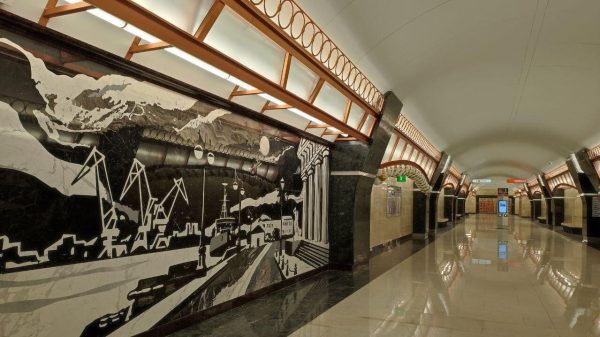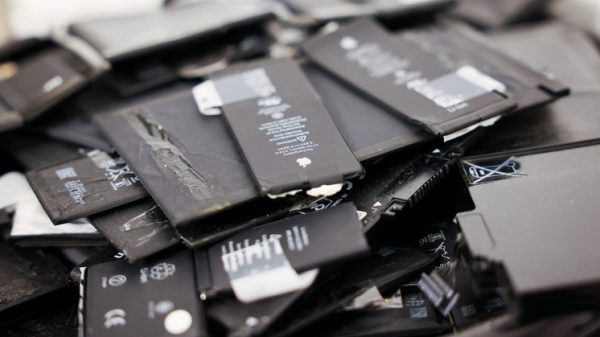
Tesla’s quarterly earnings calls are rarely dull. The most recent one was no exception.
In July, chief executive Elon Musk made a direct plea to the mining industry for an element he said he was desperate to get his hands on.
“Tesla will give you a giant contract for a long period of time if you mine nickel efficiently and in an environmentally-sensitive way. So hopefully, this message goes out to all mining companies. Please get nickel,” he said.
The company is due to unveil new battery technology at its highly-anticipated "battery day" on Tuesday. Whatever technology it will announce, it is certain to still need nickel and lithium — two elements that aren’t always easy to get.
Their growing scarcity is a problem that is weighing heavy on not just Musk, but the entire electric car industry. Demand for nickel is expected to increase six-fold by 2030, and supply isn’t keeping up.
“All of us in the industry have known that there is an abyss coming,” says Martin Vydra, president and director of Giga Metals, which is aiming to become a major supplier of cobalt and nickel through a proposed mining project Turnagain, in British Columbia, Canada.
From the Arctic wastes of northern Siberia to the tropical islands of Australasia, nickel deposits can be found around the globe — but mining them in sufficient quantity and without damaging the environment represents a big challenge.
Of the 2.1m metric tons of refined nickel that is produced annually, only 400,000 tons is in a form that can easily be converted into nickel sulphate, the form required for electric car batteries.
Demand is exploding, with electric car sales taking off in Europe and nickel consumption by the battery market predicted to hit half a million tons by the late 2020s.
Nickel mining projects have shifted to become more focused on nickel laterites, largely based in Indonesia, which are easier to find than the historically more frequently mined form of nickel sulphide, but these require a lot more work and money to refine.
Nickel also comes from projects in Madagascar and the Philippines, but there is growing unease about the reliability of these supply chains, especially since refining capacity is dominated by China.
At the moment the battery market is dwarfed by other uses for the metal, such as the production of stainless steel, so is having a limited impact on prices and demand.
But the urgent need to build longer range and smaller, lighter batteries is pushing manufacturers towards formulas with a greater nickel density. Automakers like Musk fear a looming crunch in availability — especially if they want to limit their carbon footprint and source ethically.
Caspar Rawles, of London-based Benchmark Mineral Intelligence, says that the volatile prices of elements like lithium, nickel and cobalt are a key issue for legacy automakers wanting to conquer the electric car market.
“The price risk really sits with them, and also because of the dealership structure they can’t change their prices very quickly if the price of lithium goes up, and they can’t hedge their price because there’s no hedging mechanism for lithium or cobalt.
“For nickel there is a hedging mechanism, so it’s slightly less of a concern, but in that case it’s just [that] access to the material in, let’s say, five years’ time is potentially going to be an issue.”
A flurry of recent nickel projects in Canada and European countries including Finland and Norway are promising, but not enough to head off an expected price crunch within the next decade.
Musk has expressed a desire to phase out cobalt from Tesla’s batteries, citing its high cost and ethical concerns over the Democratic Republic of the Congo’s artisanal mines, but in June signed a long-term deal with Glencore to source the metal — a concession to the practical realities of current battery technology.
Almost three-quarters of the world’s cobalt comes from the DRC, and the rest is scattered from sources around the world.
This means it is vulnerable to local political and logistical issues. Earlier this summer prices spiked because of Covid-19 lockdowns at South Africa’s sea ports, which are the main export points for shipments of cobalt hydroxide from the DRC and Zambia.
Phasing out cobalt is a safety issue, because reducing its levels makes a battery more likely to spontaneously burst into flames, and also reduces a battery’s life cycle capacity.
A shift to solid-state batteries makes the elimination of cobalt more likely, because of the lower risk of overheating. “In 10 years, is there possibility cobalt could be eliminated from lithium-ion batteries? I would say that might be a possibility,” says Vydra.
But major battery manufacturers, including LG Chem and SK Innovation, have repeatedly promised that new low-cobalt formulations would soon be commercially viable, and repeatedly missed their own targets.
Cobalt-focused projects are still going ahead, including a Bill Gates-backed initiative by startup KoBold Metals to scour a 1,000-kilometre area in Canada for the element.
“These technology changes which are quite commonly talked about by battery companies and people in the supply chain as relatively easy to do, they’re really not, they’re very challenging,” says Rawles.
Robin Goad, president and chief executive of Fortune Minerals, a Canadian mining company looking to establish a project in Canada’s Northwest Territories, said he was “quite confident” in predicting a shortage of cobalt within the next five years.
“Having a North American supply, where we have the rule of law, where we have very stringent environmental regulations as well as social licences to operate, and having transparency from the mining activity right through to the production of the cobalt chemicals is very desirable,” he said.
For all three elements a major problem is a lack of investment in getting them out of the ground. Investors are likely to be scared off by disasters including the bankruptcy of Nemaska Lithium last year, having spent CA$411.4m (£235.2m) failing to launch a mine in Quebec.
Low prices also make things tough. Buzz around battery and TV demand pushed cobalt prices up in 2016 and 2017 but they fell in 2018 and have remained low since. Lithium prices have also fallen because of a glut of supply and China’s cut in subsidies for electric car companies.
“It’s hard for these companies to attract capital, even though they could have very viable projects. When the prices are low investment money goes elsewhere,” says Rawles.
This raises the prospect of demand spiking and the supply failing to materialise. Mining is a slow-moving industry. A mine which moves from discovery to development in seven years is considered a speedy project.
Musk’s promise in July to provide nickel-mining companies "giant contracts" may go someway to reassure the industry of future profits. But in such a slow-moving sector, it’s unlikely to stave off a shortage.






















































Свежие комментарии